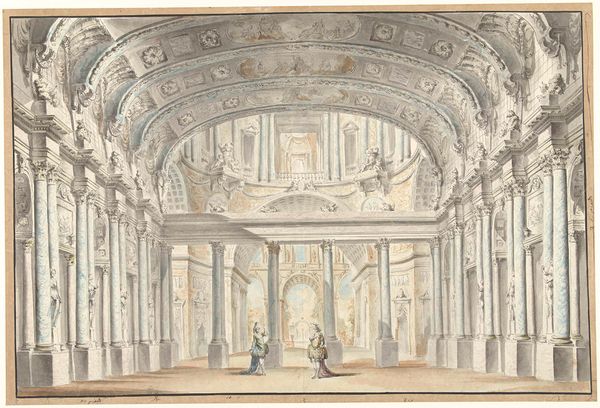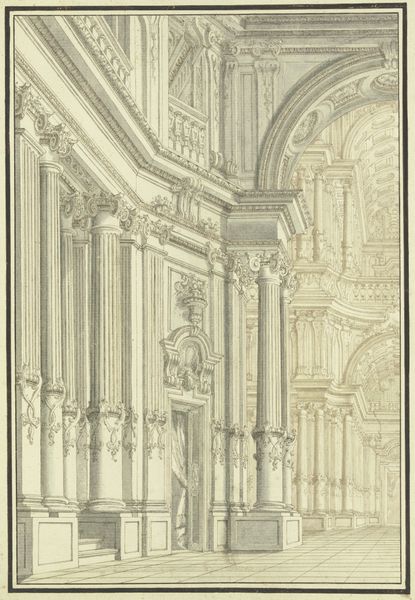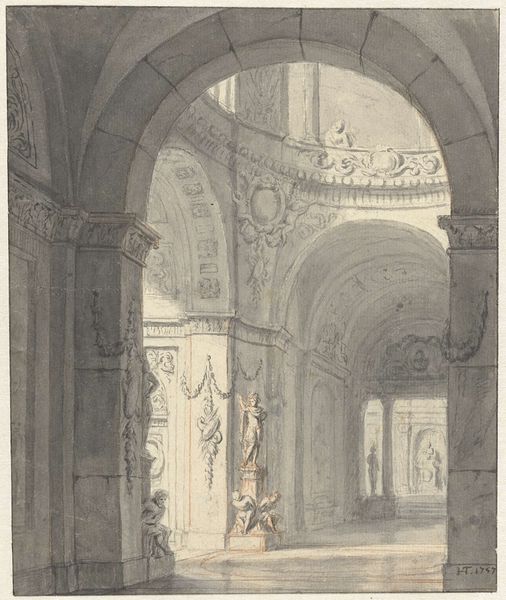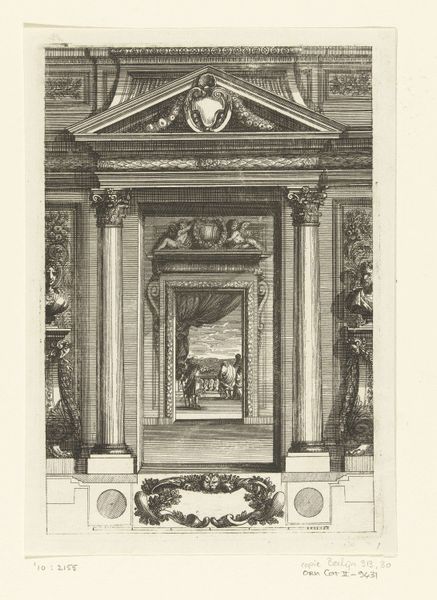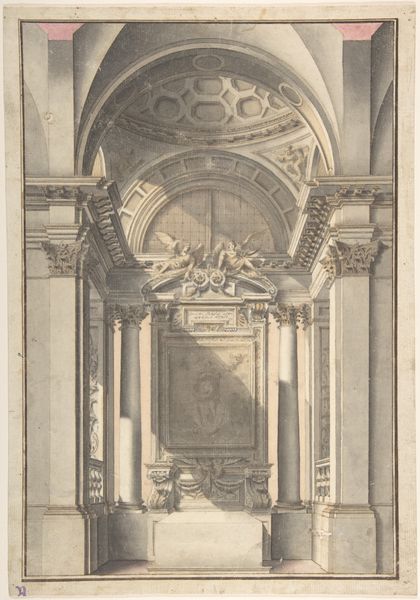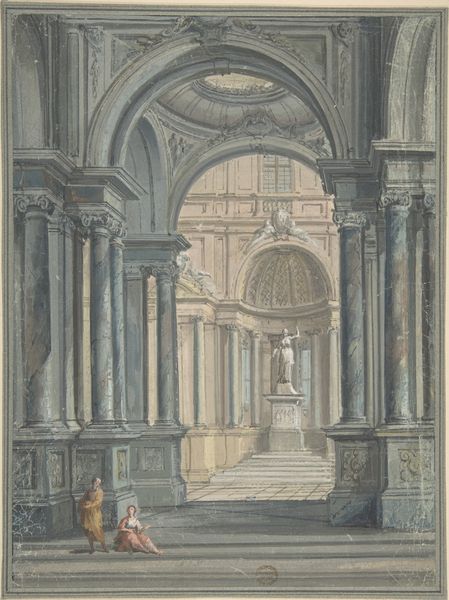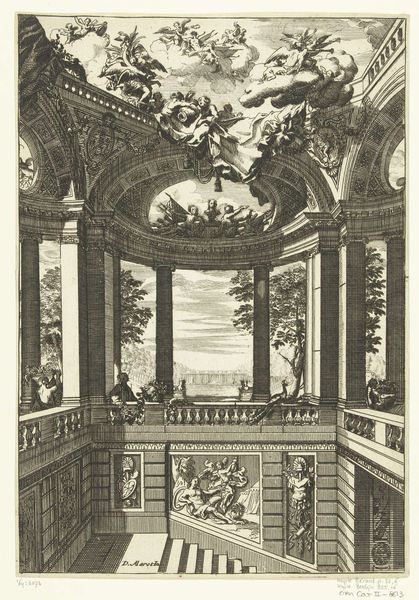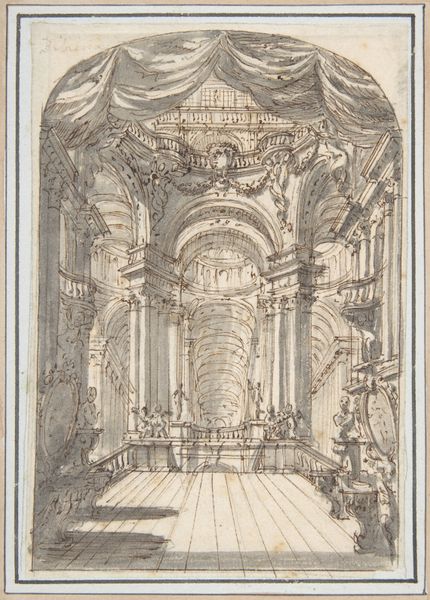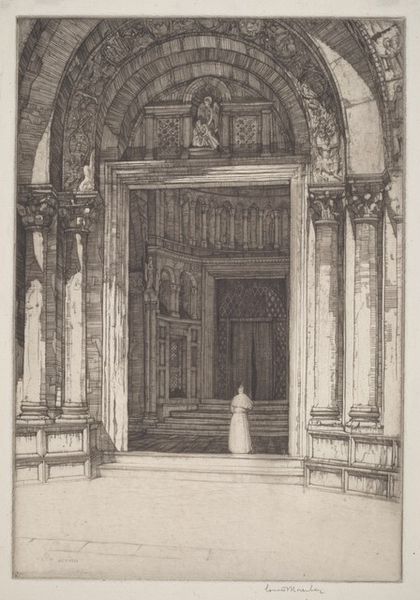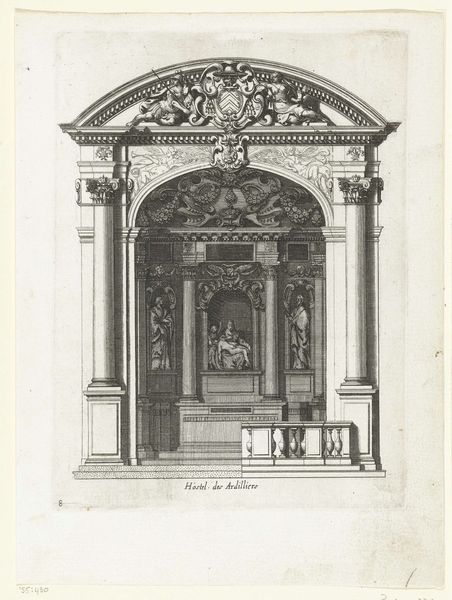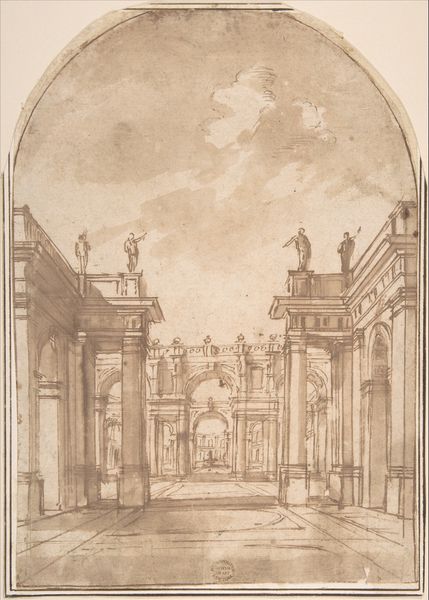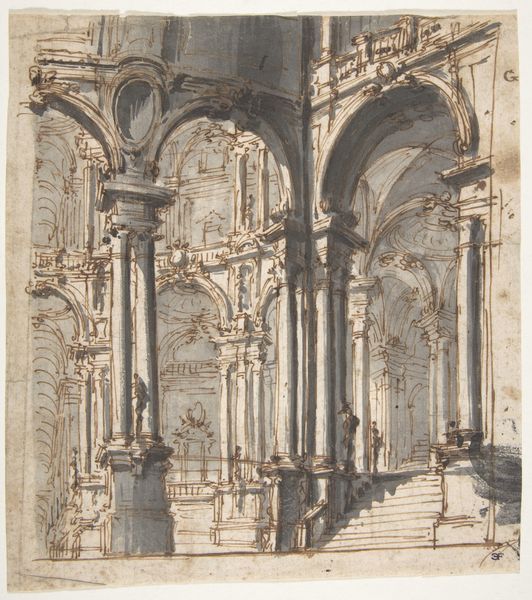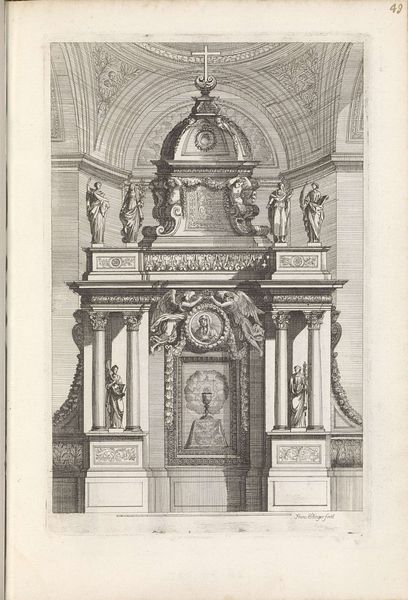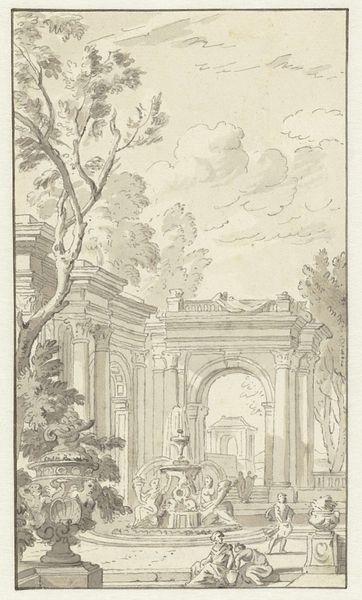
drawing, paper, ink, architecture
#
architectural sketch
#
drawing
#
aged paper
#
baroque
#
mechanical pen drawing
#
sketch book
#
classical-realism
#
perspective
#
paper
#
form
#
personal sketchbook
#
ink
#
sketchwork
#
pen-ink sketch
#
line
#
pen work
#
architecture drawing
#
cityscape
#
storyboard and sketchbook work
#
architecture
Dimensions: height 151 mm, width 119 mm
Copyright: Rijks Museum: Open Domain
Daniel de Blieck created this drawing of a Renaissance palace square in 1669. It provides a glimpse into the aesthetic values and social aspirations of the Dutch Golden Age. Classical elements, such as the arches, columns, and statuary, evoke a sense of grandeur and order, reflecting the era's fascination with classical antiquity. This interest wasn't merely aesthetic. The Dutch Republic, newly independent, looked to the Roman Republic as a model for its own political and social structures. The imposing palace suggests the presence of a powerful elite, perhaps commenting on the evolving social hierarchy of the time. Was de Blieck celebrating the ruling class or offering a subtle critique? By examining architectural treatises, social histories, and political documents from the period, we can decipher the complex relationship between art, power, and social identity.
Comments
No comments
Be the first to comment and join the conversation on the ultimate creative platform.
